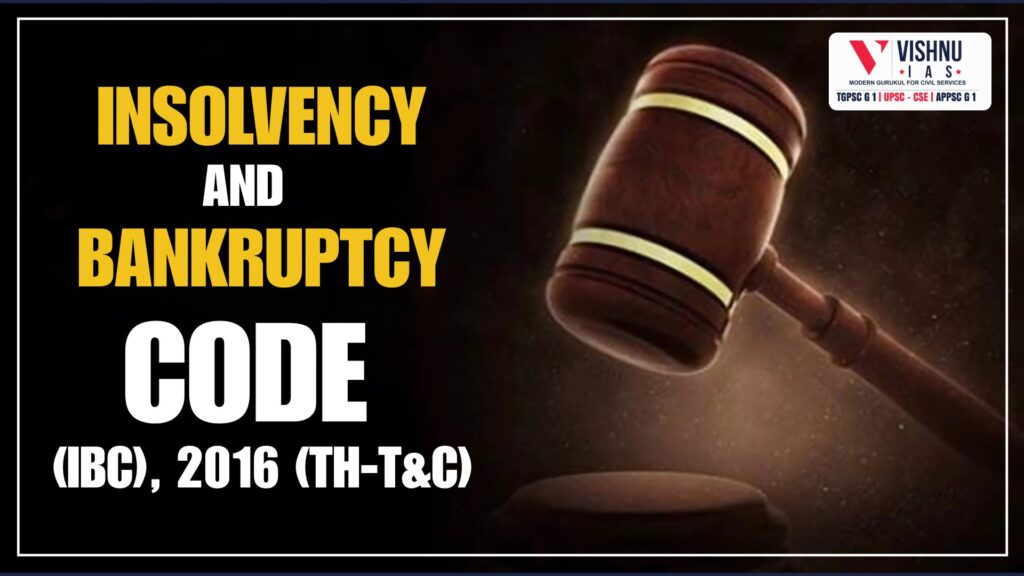Insolvency and Bankruptcy Code (IBC), 2016: Key Features, Challenges & Reforms
The Insolvency and Bankruptcy Code (IBC), 2016 is a landmark legislation that transformed India’s approach to dealing with insolvency and bankruptcy. By creating a unified, time-bound resolution mechanism, IBC has significantly enhanced India's credit culture and ease of doing business.
Background & Need for IBC
- Pre-IBC Scenario: Fragmented laws like SICA, SARFAESI, and the Companies Act created delays and inefficiencies.
- Problems Addressed: Low recovery rates, rising NPAs, lack of business revival options.
- Objective: Create a single, robust law to address insolvency across all business entities.
Key Objectives of IBC
- Consolidate insolvency laws into one comprehensive framework
- Ensure time-bound resolution within 180 to 330 days
- Maximize value of assets and improve recovery for creditors
- Promote entrepreneurship and boost investor confidence
Salient Features of IBC
- Applicability: Covers companies, LLPs, partnership firms, and individuals (except financial service providers)
- Initiation: Can be initiated by financial or operational creditors or the debtor
- Threshold: ₹1 crore default requirement for corporate insolvency
- Adjudicating Authorities: NCLT for corporates, DRT for individuals
- Moratorium: Automatic stay on all legal proceedings once insolvency is admitted
- CoC: Committee of Creditors with 66% voting power to approve resolution plans
- Insolvency Professionals: Appointed to manage the process transparently
- Information Utilities: Digitized financial data for verification
IBC Resolution Process: Step-by-Step
- Filing by creditor or debtor to NCLT/DRT
- Appointment of Interim Resolution Professional (IRP)
- Declaration of Moratorium
- Formation of Committee of Creditors (CoC)
- Submission and evaluation of Resolution Plan
- NCLT’s final approval or liquidation proceedings
Achievements of the Insolvency and Bankruptcy Code (IBC), 2016
- Faster resolution of corporate insolvency cases
- Improved average recovery rate (from < 20% to > 30%)
- Reduction in banking NPAs
- Enhanced discipline among debtors
- Boost in World Bank’s Ease of Doing Business ranking
Challenges and Concerns
- Judicial delays due to overburdened NCLTs and DRTs
- Low realization in some cases
- Post-resolution legal uncertainty
- Shortage of skilled insolvency professionals
- More liquidations than resolutions in certain sectors
Recent Amendments & Developments
- Minimum threshold for corporate insolvency raised to ₹1 crore
- Pre-packaged insolvency introduced for MSMEs
- Amendments to strengthen roles, clarify procedures, and fix loopholes
Way Forward
- Enhance capacity and digitization of tribunals
- Speed up the resolution process and finality of plans
- Promote alternative mechanisms like pre-packs
- Continuous updates to keep pace with business realities
To learn more about financial reforms, check our article on Non-Performing Assets (NPAs) in India.


